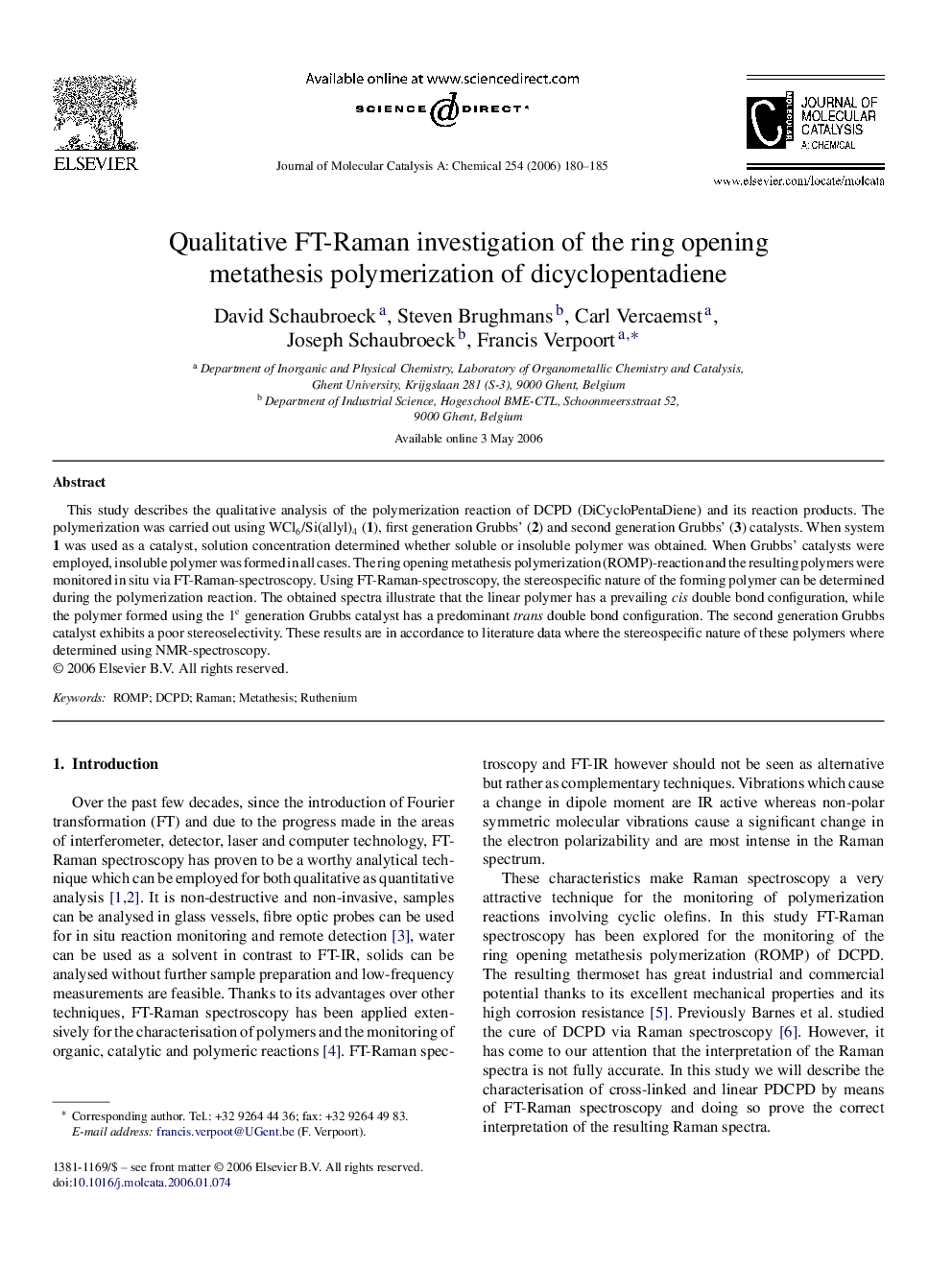| Article ID | Journal | Published Year | Pages | File Type |
|---|---|---|---|---|
| 68765 | Journal of Molecular Catalysis A: Chemical | 2006 | 6 Pages |
This study describes the qualitative analysis of the polymerization reaction of DCPD (DiCycloPentaDiene) and its reaction products. The polymerization was carried out using WCl6/Si(allyl)4 (1), first generation Grubbs’ (2) and second generation Grubbs’ (3) catalysts. When system 1 was used as a catalyst, solution concentration determined whether soluble or insoluble polymer was obtained. When Grubbs’ catalysts were employed, insoluble polymer was formed in all cases. The ring opening metathesis polymerization (ROMP)-reaction and the resulting polymers were monitored in situ via FT-Raman-spectroscopy. Using FT-Raman-spectroscopy, the stereospecific nature of the forming polymer can be determined during the polymerization reaction. The obtained spectra illustrate that the linear polymer has a prevailing cis double bond configuration, while the polymer formed using the 1e generation Grubbs catalyst has a predominant trans double bond configuration. The second generation Grubbs catalyst exhibits a poor stereoselectivity. These results are in accordance to literature data where the stereospecific nature of these polymers where determined using NMR-spectroscopy.
Graphical abstractThe qualitative analysis of the catalytic ring opening metathesis polymerization reaction of dicyclopentadiene (DCPD) and its resulting polymers by means of FT-Raman spectroscopy is described. The polymerization was conducted using WCl6/Si(allyl)4 (1), Grubbs’ first (2) and second (3) generation catalysts. It was found that 1 has a prevailing cis selectivity while 2 has a predominant trans-selectivity. Catalyst 3 exhibits a poor stereoselectivity. Figure optionsDownload full-size imageDownload as PowerPoint slide
